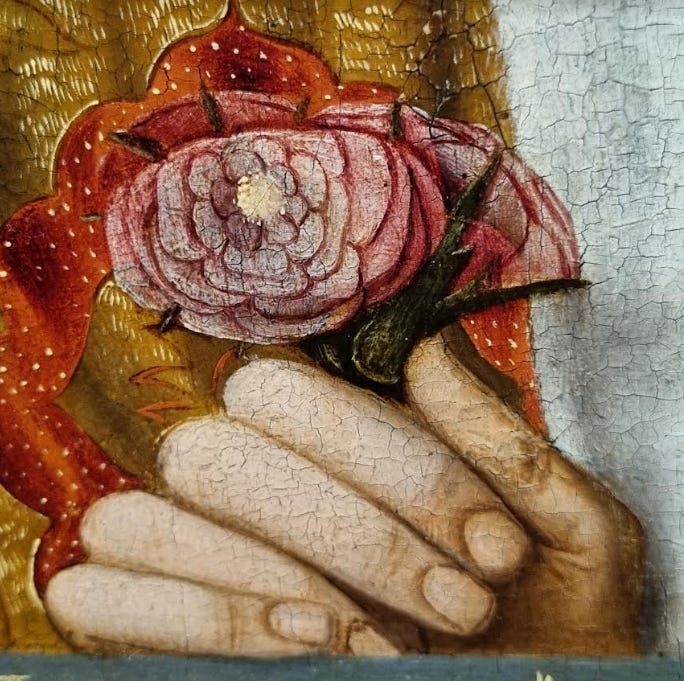London can be a difficult place to live. It’s expensive, it’s crammed, it’s vast, the air quality is iffy if you’re asthmatic like me, visitors walk too slow and get in the way, and it has an odd and unpredictable microclimate.
But, London also has much to commend it, not least several sprawling museums and galleries that are often free to enter when and as you please. Take the National Portrait Gallery, which houses an impressive collection of, well, portraits, of historically significant persons.
The gallery opened in its current location off Trafalgar Square in 1896, and its purpose is to exhibit portraits selected not on the quality or reputation of the artist, but on the sitter. For that reason, many of the faces that stare out from the walls are instantly recognisable to the visitor. Conveniently divided into separate sections, the Tudor exhibition, for example, is a passageway through the great and good, or not so good, of the sixteenth century. Expect to see Henry VIII, Elizabeth I, Anne Boleyn, Thomas More, Thomas Cromwell, Margaret Beaufort, and a dozen other faces you know well. Despite the name of the exhibition, the famous Richard III painting is also here, in all its glory. AND IT’S FREE!
What is thrilling about seeing these paintings up close and personal is it not only allows you to come eyeball to eyeball with these mighty historical figures, but to truly appreciate the craftsmanship of the artists that composed these priceless works in a way you simply cannot from digital reproductions. To see the brushstrokes, to trace the cracks in the oil, elevates the experience.
Naturally, as a historian focused on the life and reign of Henry VII, it is to he that I am always instantly drawn when I come for one of my brief wanders when passing by the Gallery. The picture is one we all know, the first Tudor king at the height of his powers, a black cap upon his head and what seems to be a black tunic beneath a gold and red surcoat trimmed with expensive fur.
Resting against a blue background, in one hand he clutches the red rose of Lancaster, with the other resting wearily on the table as though he’s about to play the piano. A focused stare through uneven eyes, a long thin nose reminiscent of his mother Margaret Beaufort, and thinly pursed lips, Henry also wears the gleaming chain of the Order of the Golden Fleece, a Burgundian chivalric order into which he was elected in 1491. He exudes power and wealth.
This is the only known portrait to exist of Henry that was painted during his lifetime, and in truth leaves quite a severe image of an increasingly ill king sinking into the depths of financial tyranny. One wonders if opinions of Henry, often characterised as a cold, distant and dour monarch, would be altered if we had a portrait of him at the age of twenty-eight, rather than forty-eight?
The artist who produced this fine oil work, the earliest painting in the NPG collection, is usually marked as unknown, or previously Michael von Sittow, though an inscription below [Anno 1505 29 octobre ymago henrich VII franciege rege illustrussimi ordinata f hermanu rinck Ro regie…missiarium'] records it was painted on 29 October 1505 by the Fleming Herman Rinck.
Rinck was an ambassador for the Holy Roman Emperor Maximilian I, a longtime foe of Henry’s, and was probably commissioned when the English king was contemplating taking another wife after the death of Elizabeth of York two years earlier. The intended bride was Maximilian’s recently widowed daughter Margaret, Dowager Duchess of Savoy, an attempt to shore up difficult Tudor-Hapsburg relations, and the portrait was to be used to show the lady a likeness of the man who would be her husband. What Margaret’s thoughts were about a man twenty-three years her senior are unrecorded.
The portrait is 16 ¾ inches high and 12 inches wide with an arched top, and was purchased by the NPG in 1876. The wooden frame is made from a single piece of oak and considered to be an original feature. It is much smaller than you would expect for such a famous royal image.
If you’re ever wandering around Trafalgar Square, possibly one of the most overrated parts of London in my opinion, you could do worse than popping into the NPG and getting up close and personal with some of their astonishing collection.
To learn more about the Henry VII portrait, click HERE









I'm going to visit the NPG for the first time on Saturday and the Tudor gallery is on my must-see list. I'm also going to see the Hans Holbein exhibition at the Queen's Gallery at Buckingham Palace, can't wait!
Thank you for this insightful post! I hadn’t heard that the portrait was no longer attributed to Sittow, so that’s great info. I hear you about museums. I’m a native New Yorker, now living in Arizona, and I really miss the variety of museums in NYC. I especially enjoyed the Metropolitan Museum of Art, and visit whenever I’m back in NY. I’ve been to London multiple times, but haven’t hit the NPG yet. Next visit for sure. Last museum I visited in London was the British Museum.